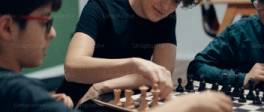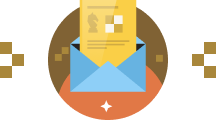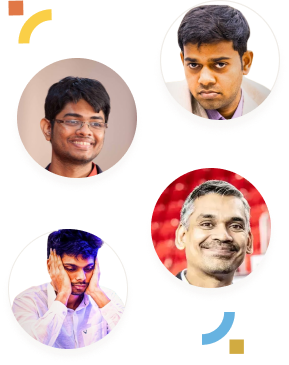Ever wondered how chess tournaments ensure fairness for every player? That’s where the round-robin chess tournament format comes in. In this system, each player competes against every other participant, ensuring everyone gets an equal chance to prove their skill. Picture a group of friends, each taking turns to play against one another. This simple but strategic setup is used in major chess tournaments worldwide.
In this blog, we’ll explore the structure, history, benefits, and challenges of round-robin chess tournaments.
Definition and Structure
In a round-robin chess tournament, the concept is simple: every player faces every other player. Depending on the tournament structure, this may happen once (single round-robin) or twice (double round-robin). If you’re playing a single round-robin, each competitor plays once against every other player. In a double round-robin, players meet each other twice—once with the white pieces and once with the black.
This structure ensures that every player has an equal opportunity to compete, making it one of the fairest formats in competitive chess. For example, if there are 10 players, a single round-robin means 9 rounds of play, while a double round-robin format doubles the number of rounds to 18.
Historical Context and Origin
Where did the term “round-robin” chess tournament come from? Originally, the term described a practice in which petitioners would sign their names in a circle on a document to avoid singling out any one individual as the leader.
The format itself has been around for centuries and is a mainstay in chess competitions today. It ensures transparency and fairness, which are essential in determining the strongest player in a field. Major chess tournaments like the FIDE Candidates Tournament and the Sinquefield Cup employ the round-robin chess tournament format because it ensures that every participant gets an equal shot at playing against all other competitors.
Looking to train for prestigious events like these? Caissa School of Chess offers training programs tailored to help you compete at the highest levels. With a focus on strategic preparation, advanced tactics, and tournament-ready skills, their expert coaches can guide you on your journey to success. Start training today and get ready to excel in top-level competitions!
Global Application in Chess and Other Sports
The round-robin format is not exclusive to chess. It’s widely used in other sports like football, tennis, and even bridge. In the world of chess, some of the most prestigious events utilize this format. The FIDE Candidates Tournament, where top grandmasters compete to challenge the world champion, often follows a double round-robin structure. Another notable example is the Sinquefield Cup, part of the Grand Chess Tour, which has seen some epic showdowns between top players like Magnus Carlsen and Fabiano Caruana.
Outside of chess, round-robin formats are popular in team sports such as the group stages of the FIFA World Cup and the UEFA Champions League. The fairness of everyone playing each other ensures that the best competitors rise to the top.
Key Benefits of a Round-Robin Chess Tournament
- Fairness for Players
The biggest advantage of the round-robin chess tournament is fairness. Since every player gets a chance to compete against every other participant, there’s no debate about who had an easier or harder set of opponents. The winner is simply the player who performs best against the entire field.
- Opportunity for Comebacks
In many knockout-style formats, an early loss can spell the end of the road. However, in a round-robin chess tournament, a player who loses early still has multiple rounds to stage a comeback. For example, a player who loses in round one can still win the tournament by winning subsequent rounds.
Think you can stage a comeback? Test your resilience and strategy in Caissa School of Chess’s training events, where every match is a fresh opportunity. With expert guidance and competitive matchups, you’ll not only improve but also challenge yourself against skilled players. Sign up today and see how far your game can go!
Challenges of Round-Robin Chess Tournament Formats

While the round-robin system has many benefits, it also comes with its own set of challenges, especially when applied to larger tournaments.
Complexity with Larger Numbers
As the number of participants increases, so does the number of rounds. For example, in a 10-player single round-robin, there are 9 rounds. But if the player count increases to 20, suddenly there are 19 rounds! In a double round-robin, this number doubles. Managing a large tournament over many rounds can be logistically challenging for organizers.
Scheduling Difficulties
Another issue with the round-robin format is scheduling. A round-robin chess tournament requires a large number of games, which means more time and resources. Moreover, if one player withdraws or forfeits, it can disrupt the whole tournament schedule.
Lack of Dramatic Conclusion
In knockout tournaments, the final round has a clear winner-takes-all appeal. Round-robin tournaments, however, may not have a dramatic climax if the winner is already determined before the final round. This can make the end of the tournament less exciting for spectators.
Scheduling Techniques
Scheduling matches in a round-robin format isn’t as simple as it sounds. For smaller tournaments, you can plan matchups easily, but with larger tournaments, special techniques are employed.
Berger Tables
The most common method for organizing round-robin chess tournaments is using Berger tables. These pre-determined schedules ensure that each player faces every other competitor. This method is especially useful for tournaments with an even number of participants.
Circle Method
For tournaments with an odd number of players, the circle method is often used. This involves arranging the players in a circle and rotating the pairings each round to ensure that everyone plays each other. This method is particularly useful when dealing with scheduling odd/even numbers of participants.
Scoring and Winner Determination
The standard scoring system in a round-robin chess tournament is straightforward:
- A win is worth 1 point.
- A draw is worth 0.5 points.
- A loss is worth 0 points.
At the end of the tournament, the player with the highest total score is declared the winner. In cases where two or more players have the same score, tiebreak methods such as the Sonneborn-Berger score or head-to-head results are often used to determine the final rankings.
In major tournaments, where ties are often unacceptable, organizers may even hold playoff matches between tied players.
Wrapping It Up: Is Round-Robin the Best Format for Your Chess Event?
Round-robin chess tournaments are a fair and inclusive way to determine the strongest player. They ensure that every competitor faces each other, removing any question of who had the easier path to victory. While the format offers fairness and opportunities for comebacks, it also poses challenges in terms of complexity and scheduling, particularly in large tournaments.
So, is a round-robin tournament the best choice for your chess event? That depends on the number of participants and the time you have available. If you’re seeking a transparent and fair way to crown a champion, the round-robin format is tough to beat.
Want to sharpen your skills for a round-robin or double round-robin format chess tournament? Caissa School of Chess offers comprehensive training and guidance for players of all levels. Whether you’re a beginner or an experienced competitor, expert coaches like GM Vishnu Prasanna and GM Swapnil Dhopade provide personalized lessons to enhance your strategy, improve your game, and prepare you for tournament play.
You can choose what suits your schedule best. Caissa School of Chess also hosts regular practice sessions, simuls, and interactive tournaments to ensure you’re match-ready. Explore their training programs today and take the next step in mastering chess!
What do you think—would you prefer to play in a round-robin or knockout-style tournament? Let us know your thoughts!








